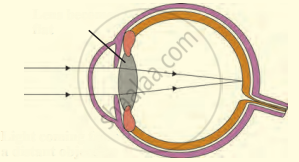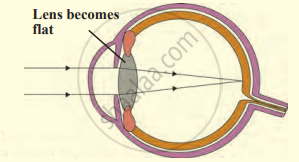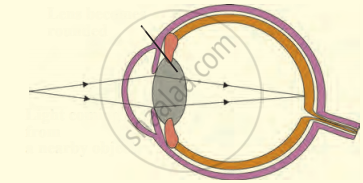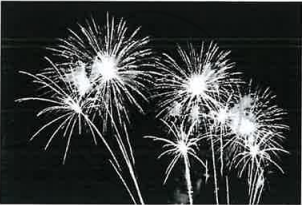Advertisements
Advertisements
प्रश्न
The following figure show the change in the shape of the lens while seeing distant and nearby objects. Complete the figures by correctly labelling the diagram.

उत्तर
Light coming from a distant object-

APPEARS IN
संबंधित प्रश्न
Write the function of the following part of the human eye:- iris
Define the term.
Power of accommodation of the eye.
Name the part of the eye:
which changes the focal length of eye-lens.
What is the name of:
the curved, transparent front surface of the eye?
Out of rods and cones m the retina of your eye:
which work in dim light?
Give the scientific names of the following parts of the eye:
muscles which change the shape of the eye-lens.
What changes take place in the shape of eye-lens:
when the eye is focused on a near object?
What change is made in the eye to enable it to focus on objects situated at different distances? Illustrate your answer with the help of diagrams.
An object is moved closer to an eye. What changes must take place in the eye in order to keep the image in sharp focus?
When is a person said to have developed cataract in his eye? How is the vision of a person having cataract restored?
State whether the following statement is true or false:
Rabbit has eyes which look sideways.
Mention if the following statement is true (T) or false (F) Give reason.
Ciliary muscles regulate the size of the pupil
With reference to the functioning of the eye, answer the question that follow:
What is the shape of the lens during near vision?
With reference to the functioning of the eye, answer the question that follow:
Name the two structure in the eye responsible for bringing about the change in the shape of the lens.
Give scientific reason:
One can sense colours only in bright light.
Give the main function of the following:
Fovea centralis
Name the following:
The opening through which light enters the eyes.
Name the following:
The pigmented circular area seen in the eye.
Name the following:
The innermost layer of the eye
Name the following:
Yellow spot and ciliary muscles are found in.
Choose the Odd One Out:
Write scientific reason.
The movie cannot be enjoyed if seat of a viewer is too close to the screen in the cinema.
The following figure show the change in the shape of the lens while seeing distant and nearby objects. Complete the figures by correctly labelling the diagram.

The pigmented circular area seen in front of the eye:
At noon the sun appears white as
Eyes of the nocturnal birds have large cornea and a large pupil. How does this structure help them?
Which cells of the retina enable us to see coloured objects around us?
With reference to human eye, answer the following question.
What is blind spot?
| Column I | Column II | ||
| 1 | Retina | a | Path way of light |
| 2 | Pupil | b | Far point comes closer |
| 3 | Ciliary muscles | c | near point moves away |
| 4 | Myopia | d | Screen of the eye |
| 5 | Hypermetropia | e | Power of accomodation |
Chris was watching the display of fireworks in the sky.

- Trace the path of the light rays using the following terms:
Fovea, Lens, Conjunctiva, Pupil, Cornea. - Name the nerve that carries the impulse for vision to the brain.
State the functions of the following:
Ciliary muscles
Name the following:
Place of no vision in the retina of the eye.
Name the following:
The circular opening enclosed by iris.
Name the following:
Capacity of the eye to focus at different distances.
The layer in the eye where sensory cells (rods and cones) are located ______.
An aperture that controls the passage of light into the eye is ______.
Name the following:
Two pigments of the sensory cells.
Differentiate between members of the following pair with reference to what is asked in the bracket.
Aqueous humour and vitreous humour (location).
